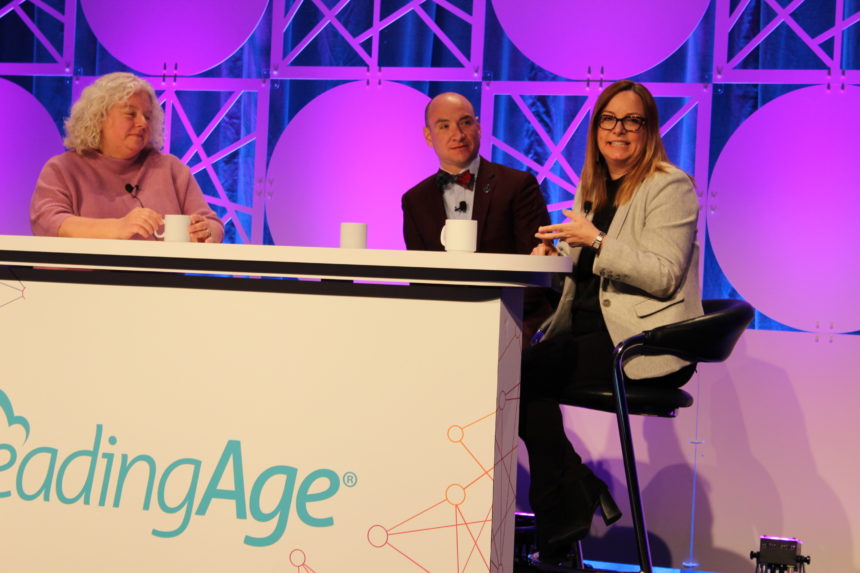
Long-term care providers chose to view the proverbial glass as more than half full Tuesday, while also acknowledging that challenging operating conditions are taking a toll.
The secret to revitalization for long-term care operators lies in their surrounding communities, emphasized LeadingAge Vice President of Regulatory Affairs Janine Finck-Boyle, who spoke during the group’s Leadership Summit in Washington, D.C.
“Nursing homes are dying on the vine, but there are opportunities,” she told McKnight’s moments after taking part in a policy panel with colleagues Linda Crouch and Aaron Tripp. “There are providers closing and decertifying beds. The way to go is collaboration in the community.
“There is work with hospice, home care, home health out there. Digging into the community will help people come to the nursing home,” she added. “Nursing homes have had to ‘stay behind the doors’ to be compliant, but the end of Stage 3 [of the new Requirements of Participation] is coming to an end this fall.”
Providers can help community institutions, volunteer or simply make people aware of services and job opportunities, she noted.
“Make sure your organization is part of the community, because nursing homes are not on anyone’s bucket list,” she reminded the 795 conference attendees.
The October onset of the Patient-Driven Payment Model can be a boon to skilled nursing providers, she observed. Hospital discharge planners will be looking for help with younger patients, as well as those with higher acuity levels and more comorbidities.
“It changes your operations when you have higher acuity [residents],” said Finck-Boyle, a former nursing home administrator. “You need different staffing skills, supplies, pharmaceuticals, even activities — maybe not everyone can get in the bus you’re using.”
The LeadingAge summit concludes Wednesday with lobbying visits to members’ respective congressional offices. Among other initiatives, Finck-Boyle and fellow panelists encouraged attendees to press lawmakers to pass HR 1265, which would end “counterproductive” two-year nurse aide training lockouts for providers accumulating fines of $10,000 or higher.




